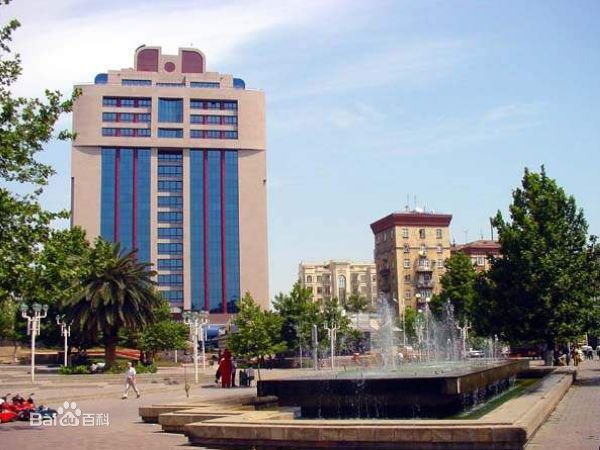 Azerbaijan's high economic growth during 2006-08 is attributable to large and growing oil exports, but the non-energy sector also featured double-digit growth in 2008, spurred by growth in the construction, banking, and real estate sectors. However, the current global economic slowdown presents some challenges for the Azerbaijani economy as oil prices have plummeted
Azerbaijan's high economic growth during 2006-08 is attributable to large and growing oil exports, but the non-energy sector also featured double-digit growth in 2008, spurred by growth in the construction, banking, and real estate sectors. However, the current global economic slowdown presents some challenges for the Azerbaijani economy as oil prices have plummeted
since mid-2008 and local banks face a more uncertain international financial environment. Negotiation of production-sharing arrangements (PSAs) with foreign firms, which have committed $60 billion to long-term oilfield evelopment, should generate the funds needed to spur future industrial development. Azerbaijan shares all the formidable problems of the former Soviet republics in making the transition from a command to a market economy, but its considerable energy resources brighten its medium-term prospects.
Trade with Russia and the other former Soviet republics is declining in importance, while trade is building with Turkey and the nations of Europe. Long-term prospects will depend on world oil prices, the location of new oil and gas pipelines in the region, and Azerbaijan's ability to manage its energy wealth to promote sustainable growth in non-energy sectors of the economy and spur employment.
Location: Southwestern Asia, bordering the Caspian Sea, between Iran and Russia
Population: 9,477,000 (2014 est.)
Land Area: 86600km2
Capital: Baku
Main cities: Ganja, Sumgait
Languages: Azerbaijani Turkic, Russian, Armenian
GDP: $73.561 billion (2013 est.)
Monetary unit: Manat
Exports: $12.51 billion f.o.b. (2006 est.)
Exports – commodities: oil and gas 90%, machinery, cotton, foodstuffs
Exports – partners: Italy 30.1%, France 11.7%, Czech Republic 10.1%, Germany 7.9%, US 7.7%, UK 4.4% (2006)
Imports: $5.176 billion f.o.b. (2006 est.)
Imports – commodities: machinery and equipment, oil products, foodstuffs, metals, chemicals
Imports – partners: Russia 19.6%, UK 12.6%, Turkey 9.9%, Germany 8.7%, Singapore 6.2%, China 4.9% (2006)
Land use:
arable land: 20.62%
permanent crops: 2.61%
other: 76.77% (2005)
Natural resources: petroleum, natural gas, iron ore, nonferrous metals, bauxite
 Azerbaijan's high economic growth during 2006-08 is attributable to large and growing oil exports, but the non-energy sector also featured double-digit growth in 2008, spurred by growth in the construction, banking, and real estate sectors. However, the current global economic slowdown presents some challenges for the Azerbaijani economy as oil prices have plummeted
Azerbaijan's high economic growth during 2006-08 is attributable to large and growing oil exports, but the non-energy sector also featured double-digit growth in 2008, spurred by growth in the construction, banking, and real estate sectors. However, the current global economic slowdown presents some challenges for the Azerbaijani economy as oil prices have plummeted

